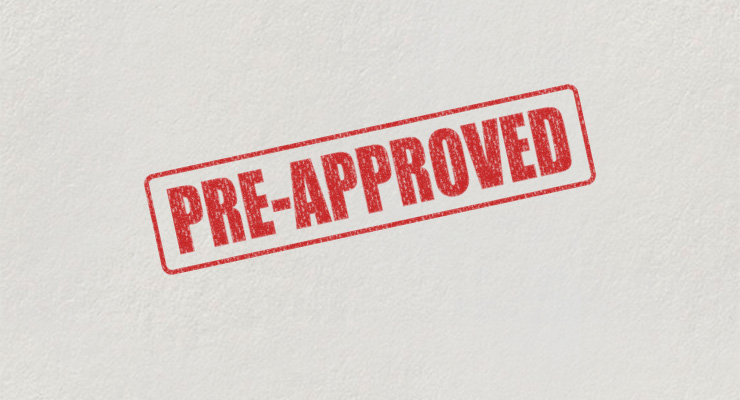
Mortgage pre-approval is often talked about when buying a home and is sometimes a necessity before making an offer on a property. But what is a pre-approved mortgage and how do you get one? This handy guide should help give a quick introduction to mortgage pre-approvals:
What is a pre-approved mortgage?
A pre-approved mortgage is an agreement from a lender that secures you a mortgage at a guaranteed rate (for fixed-rate mortgages) for a specific length of time and helps determine you how much you can likely borrow. Importantly, your pre-approved mortgage also shows you the monthly payments on the mortgage, so you can decide if you are comfortable with the amount. Often, the lender will give a pre-approved mortgage certificate to confirm the agreement.
Generally, the pre-approved mortgage rate is guaranteed for around 120 days, which means your rate is protected within that time frame, so long as you confirm your mortgage in that time. Should interest rates increase between the time you receive the mortgage pre-approval and the time that you finalise the mortgage, your rate will not increase. On the other hand, if interest rates fall in that time, you can benefit from the new, lower rate.
It’s important to note that mortgage pre-approval is a one-way commitment: your lender is committed to a loan at that protected rate, but you are not committed to use them. You’re also under no obligation to purchase a home when you get a mortgage pre-approval.
What are the main benefits of a mortgage pre-approval?
First and foremost, with a pre-approved mortgage, you go into your home search with a clear idea of how much you can afford. This helps you prioritise the properties you look at and rule out any that are unrealistic – saving you a lot of time and energy in the process. Meanwhile, in the case of a bidding war, it can give you the confidence to know that you are still bidding within your means and not over-extending your finances. Lastly, if you are able to negotiate a condition for financing, having a pre-approval means you should be able to determine faster whether the home you purchased can be financed by your lender. This can save you both time and stress.
A final point is it helps to show that you are a serious buyer and can help give an advantage in cases where there are multiple bids on a property because the seller will be aware that there is less risk of your financing falling through.
What do I need to get a pre-approved mortgage?
There may be differences between institutions but generally lenders ask for a variety of documents to confirm your identity, credit worthiness and ability to afford a mortgage. These can include:
- Personal identification like a driver’s license or passport
- Confirmation of your employment status and income
- Information about any other sources of income and any assets that you hold
- Details of any outstanding debts, including totals owed and monthly repayment figures
- The down payment total and the source of these funds
There may be other things required by your lender before they will pre-approve a mortgage. Your lender will be able to confirm the full list of details. Remember that while you get a couple of “free” credit checks per year, excessive numbers of credit checks can lead to a lowering of your credit score. Therefore, while it may be tempting to get pre-approvals from a number of lenders to lock in the best rate possible, understand that each lender will do their own credit check, thus potentially impacting your overall score.
What is the difference between mortgage pre-qualification and mortgage pre-approval?
Mortgage pre-approval is a firm commitment from a bank or other financial institution to lend you money at a specified rate based upon your financial situation. Mortgage pre-qualification is a more general look at what you might be able to borrow but does not guarantee anything and should only be used as a rough estimate.



